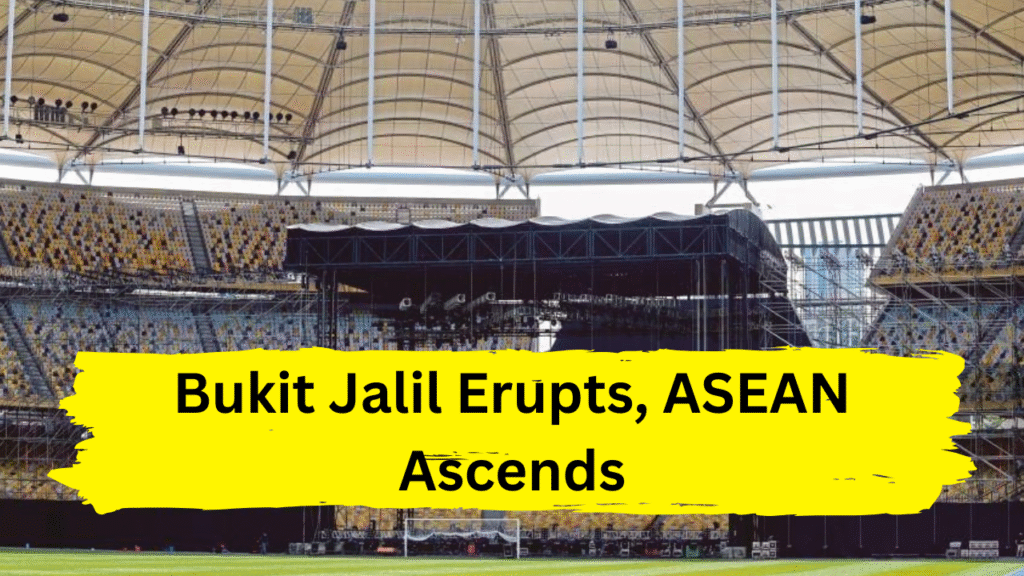
The air in Kuala Lumpur crackled with more than tropical humidity on May 28, 2025. It vibrated with the collective heartbeat of 85,500 fans who transformed Bukit Jalil National Stadium into a cauldron of history. When Myanmar’s Maung Maung Lwin slotted his 71st-minute winner past Manchester United’s keeper, the explosion of sound wasn’t just celebration—it was the birth cry of a united Southeast Asian football identity, echoing from the terraces to the tear-streaked faces of fans who’d journeyed from every corner of the region. This wasn’t a match; it was a seismic cultural moment where underdogs became icons and borders dissolved in a sea of shared euphoria .
The Pilgrimage: A Sea of Red and Regional Pride
Long before kickoff, the stadium pulsed with anticipation. Fans began gathering as early as 3 p.m.—hours before gates opened at 5:30 p.m.—braving sweltering heat that left players “soaked in sweat” during warm-ups. They arrived not just from Malaysia, but from Vientiane to Jakarta, Bangkok to Ho Chi Minh City:
- Khamsay Yomsamone, 43, traveled from Laos solely to witness his heroes. “I started supporting United during the era of Ryan Giggs and David Beckham. I cannot believe I’m here tonight,” he confessed, clutching a ticket he’d dreamed of for decades .
- Warinthorn Mitrchob, 19, from Thailand, wore a Harry Maguire shirt but secretly hoped ASEAN’s lone Laotian player, Bounphachan Bounkong, would shine.
- Iqbal Azhar, 25, flew from Jakarta predicting an ASEAN upset: “They may defend well and counter-attack. But tonight? Tonight we stand together” .
For many, this was more than football. It was a homecoming—Manchester United’s first visit since 2009—and a symbol of ASEAN unity fresh off the heels of the region’s 46th Summit. As ASEAN Football Federation President Khiev Sameth declared, this was “a force that transcends borders… a celebration of hope” .
The Symphony of Unity: Chants, Heat, and History
As temperatures hit 31°C, the stadium became a pressure cooker of passion. The “Mexican wave” that rippled through stands midway through the second half—typically a sign of dwindling tension—instead became a symbol of communal endurance. When Lwin’s goal ignited the night, the roar wasn’t just Malaysian; it was a 10-nation crescendo. Singaporeans hugged Thais. Indonesians hoisted Laotian flags. A Syrian fan who’d worried about goalkeeper Andre Onana’s blunders now stood speechless, swept into the collective delirium .
The stadium’s infrastructure strained to contain the emotion:
- Rapid KL extended LRT operations until 12:30 a.m., ferrying euphoric fans homeward .
- Police meticulously managed 70,000+ attendees, banning everything from power banks to umbrellas to safeguard the historic moment .
- Charitable purpose anchored the frenzy, with proceeds supporting Yayasan Al Sultan Abdullah, proving football’s power as a catalyst for regional goodwill .
The Deeper Resonance: More Than One Goal
Beyond the scoreline, this night rewrote ASEAN’s football narrative:
- From Nostalgia to Identity: Older fans reminisced about United’s 2009 visit, but younger generations found new heroes in ASEAN’s “no-name” warriors like Malaysia’s Ezequiel Aguero and Singapore’s João Pedro .
- A Regional Launchpad: As Khamsay Yomsamone urged post-match, “I wish for more ASEAN All-Stars games across our capitals.” The match proved the region could host elite global events—and compete .
- Healing United’s Wounds: For Manchester United, languishing in 15th place domestically, the loss was a humiliation. For ASEAN, it was vindication—proof that tactical discipline and collective spirit could topple financial goliaths .
The Legacy: Where Football Met Destiny
As the monsoon rains lashed Kuala Lumpur post-match, they couldn’t wash away the seismic shift. Fans lingered in the stands, singing anthems in Bahasa, Thai, and Tagalog. The ASEAN All-Stars’ victory lap wasn’t just for players; it was for a cook from Vientiane, a student from Bangkok, and a dreamer from Jakarta—all united under Bukit Jalil’s floodlights.
Football Association of Malaysia president Datuk Joehari Ayub called it a “powerful symbol of unity,” a night that “reminded us of teamwork, dedication, and legacy” . Indeed, when Lwin’s strike hit the net, it didn’t just beat a goalkeeper; it announced ASEAN’s arrival on football’s global stage—a moment forged not by stars, but by 85,500 believers who roared it into existence .
The Maybank Challenge Cup didn’t just raise funds for charity—it raised the ceiling of Southeast Asian football ambition. With extended LRT hours ferrying euphoric fans into the Kuala Lumpur night, the message was clear: ASEAN’s future isn’t on the horizon. It’s here, and it wears football boots.




